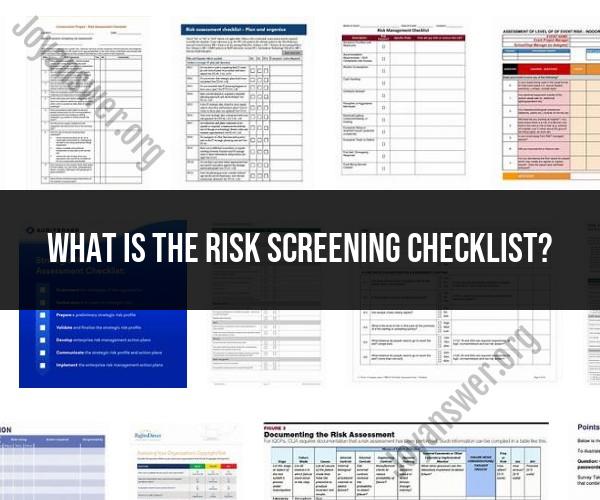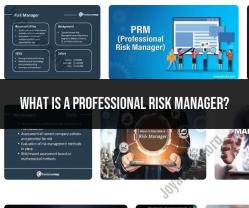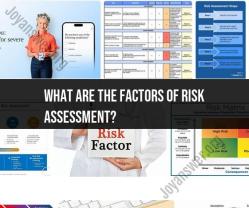What is the risk screening checklist?
Risk assessment is a critical step in effective risk management. A risk screening checklist is a valuable tool that helps identify, assess, and prioritize potential risks in a systematic manner. Let's explore how to evaluate risks using a risk screening checklist:
1. Define the Scope
Clearly define the scope of the risk assessment. Identify the project, process, or area you are assessing for potential risks. Understanding the context is essential for a focused and relevant evaluation.
2. Identify Potential Risks
Brainstorm and list potential risks that could affect the defined scope. Consider internal and external factors that could impact the project or process. Involve relevant stakeholders to gather diverse perspectives.
3. Develop a Risk Screening Checklist
Create a risk screening checklist that includes key categories for evaluating risks. Common categories may include:
- Financial Risks
- Operational Risks
- Technological Risks
- Legal and Regulatory Risks
- Environmental Risks
- Social and Reputational Risks
4. Assess Risks within Categories
For each category in the checklist, assess the potential risks. Use a qualitative or quantitative scale to rate the likelihood and impact of each risk. Consider factors such as severity, frequency, and consequences.
5. Prioritize Risks
Rank the assessed risks based on their significance. Prioritize risks that have higher potential impact and likelihood. This ranking helps allocate resources and attention to the most critical risks.
6. Mitigation Strategies
For each high-priority risk, develop mitigation strategies. Identify actions that can reduce the likelihood or impact of the risk. Assign responsibilities and timelines for implementing these strategies.
7. Documentation and Communication
Document the findings of the risk screening checklist, including identified risks, assessments, prioritization, and mitigation strategies. Communicate the results to relevant stakeholders for awareness and alignment.
8. Regular Review and Update
Risks evolve over time, so regularly review and update the risk screening checklist. New risks may emerge, and the significance of existing risks could change. Stay proactive in managing risks to ensure effective risk mitigation.
Conclusion
The risk screening checklist is a powerful tool for evaluating and managing risks. By following a structured process of identification, assessment, prioritization, and mitigation, organizations can make informed decisions and proactively address potential challenges. Incorporating the risk screening checklist into risk management practices enhances preparedness and contributes to successful project outcomes.




